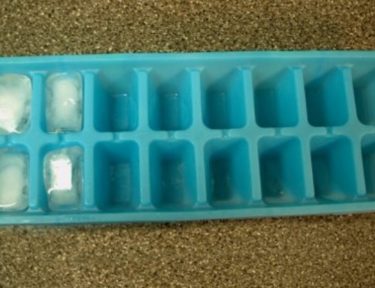7 Skin Issues That Could Be Warning Signs of Serious Health Problems
When it comes to our health, the more information we have – and the more information we can give our doctors when seeking a diagnosis – the better. While being too hypervigilant runs the danger of turning us all into hypochondriacs, ultimately you can’t go wrong really paying attention to and knowing your body. The easiest and most obvious area to monitor? Our skin— so why do so many of us think of skin ailments as beauty problems instead of health ones?
Maybe it’s the aisles and aisles of oils, moisturizers, lotions and potions we see in every department, grocery and drug store, or the endless commercials promising quick fixes, but it’s all too easy to assume that a problem on our skin is simply superficial. Think about it, though— our skin is actually our largest organ. So if it’s acting up, breaking out, or doing something unusual, it stands to reason that it could be indicative of a larger, more internal problem. Instead of just a source of beauty stress, think of your skin as your body’s early warning system, and check out our list of what those warnings could mean. If you recognize any of these symptoms, make an appointment with your doctor STAT. You’ll look and feel better.
- Discoloration
We’re not going to tell you yet again to make sure you wear sunscreen – J/K, we totally are; wear sunscreen always! – but sun exposure isn’t the only thing that can change the color of your skin, and the red of a sunburn isn’t the only color we have to concern us. Any time your skin suddenly changes color, it could be a sign of a deeper, and larger, problem.If you notice your skin darkening around scars, knees, elbows and other joints, or in the folds of your body, it could be a symptom of an hormonal, adrenal disorder like Addison’s disease. If you already have a condition like diabetes, bronzing skin can indicate a problem with your body’s ability to metabolize iron, and yellowing skin can indicate a problem with your liver. Get any and all discolorations checked by your doctor!
- Acne
Major acne breakouts in adulthood aren’t always simply annoying flashbacks to our more awkward teenage years. Often, they’re an indication of hormonal changes and/or imbalances, related to stress or a woman’s menstrual cycle, and they can be of a more intense or cystic version than we remember from adolescence. Sometimes, they’ll fade away naturally or respond to simple medication. However, if they’re paired with irregular periods or don’t respond to medication, check with your doctor— adult acne is also a symptom of PCOS. - Rashes
Now, don’t panic— it’s possible to get a rash for all sorts of reasons, the most common being, of course, an allergic reaction to something. If you get one and it doesn’t respond to typical treatment, then consult with your doctor to see if it’s an allergy to medicine, an internal infection, or some other reason.The more serious and more worrisome rashes? A purple, velvety kind that appears on the back of your neck or in the folds of your body. Called acanthosis nigricans, it can be a sign of type II diabetes. And if that rash is a “normal” texture, but still purple and spread across your lower legs? It could be a symptom of hepatitis C. As always, consult your doctor to get any worrisome rash checked out.
- Butterfly Rash
One particular type of rash to which you should also pay particular attention and get checked out? The “butterfly rash” – properly known as a “malar rash” – that appears spread across you face, on your nose and upper cheeks below your eyes. While it could simply be rosacea or contact dermatitis, it could also be a symptom of lupus. - Psoriasis
We’ve all heard the term “psoriasis” before – seems like there’s a commercial for a new medication every day – but how many of us know what it really is and what its symptoms really indicate? So let’s clear it up: psoriasis appears as red, raised patches anywhere on your skin. The telling detail that lets you know these patches are psoriasis and not something else? They’ll have silvery scales.More than an irritating and often embarrassing skin condition, psoriasis is actually an autoimmune disorder, one that tells your body to produce and grow more skin cells than you really need. When your body can’t shed those cells fast enough, you get the red, raised patches with silver scales. If you get these patches, don’t just cover them up; see a doctor, and see one regularly, because psoriasis increases your likelihood of developing type 2 diabetes, high blood pressure, and other cardiovascular conditions.
- Eczema
Have dry, itchy, red skin but not the silvery scales that mean psoriasis? It might actually be eczema. Sometimes called dermatitis, it’s a condition characterized by inflammation, thickening, and even crusting, and can be a sign of a hormonal imbalance and/or thyroid condition, or even an autoimmune disease called systemic sclerosis (i.e. scleroderma). Don’t panic if you notice such dry skin; just check with your doctor. - Freckles
Freckles and moles are natural – and often adorable! – distinguishing feature for all kinds of skin types, and if you’ve always had them, you don’t need to be suddenly alarmed. When do you need to worry? When you suddenly get them for the first time, or new ones show up, especially if you notice them appearing on your skin after a sunburn or a long time outside. (Yup, we’re back on the sunscreen thing again. Wear it.) Abnormal freckles and moles are some of the first signs of melanoma, so if you notice new ones, or if old ones start changing their shape and/or size, check in with your dermatologist.
When in doubt about a skin condition, always check with your doctor. It can be tempting to simply slap on some foundation and go about your day, but remember: your skin is your warning system. Listen to it.
Notice a condition or a quality of your skin we didn’t mention here? Check out these other guides to skin ailments and what they could mean:




